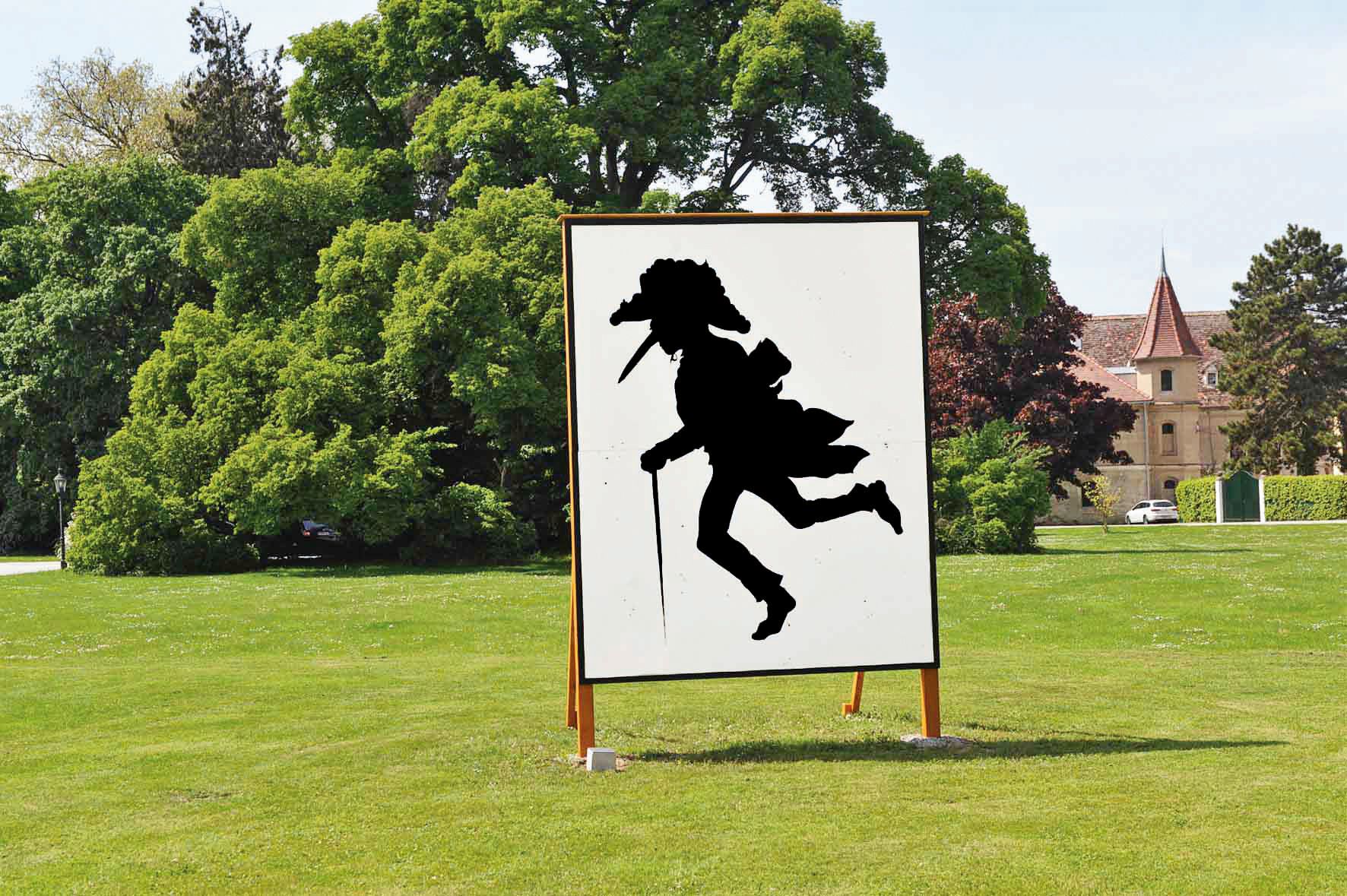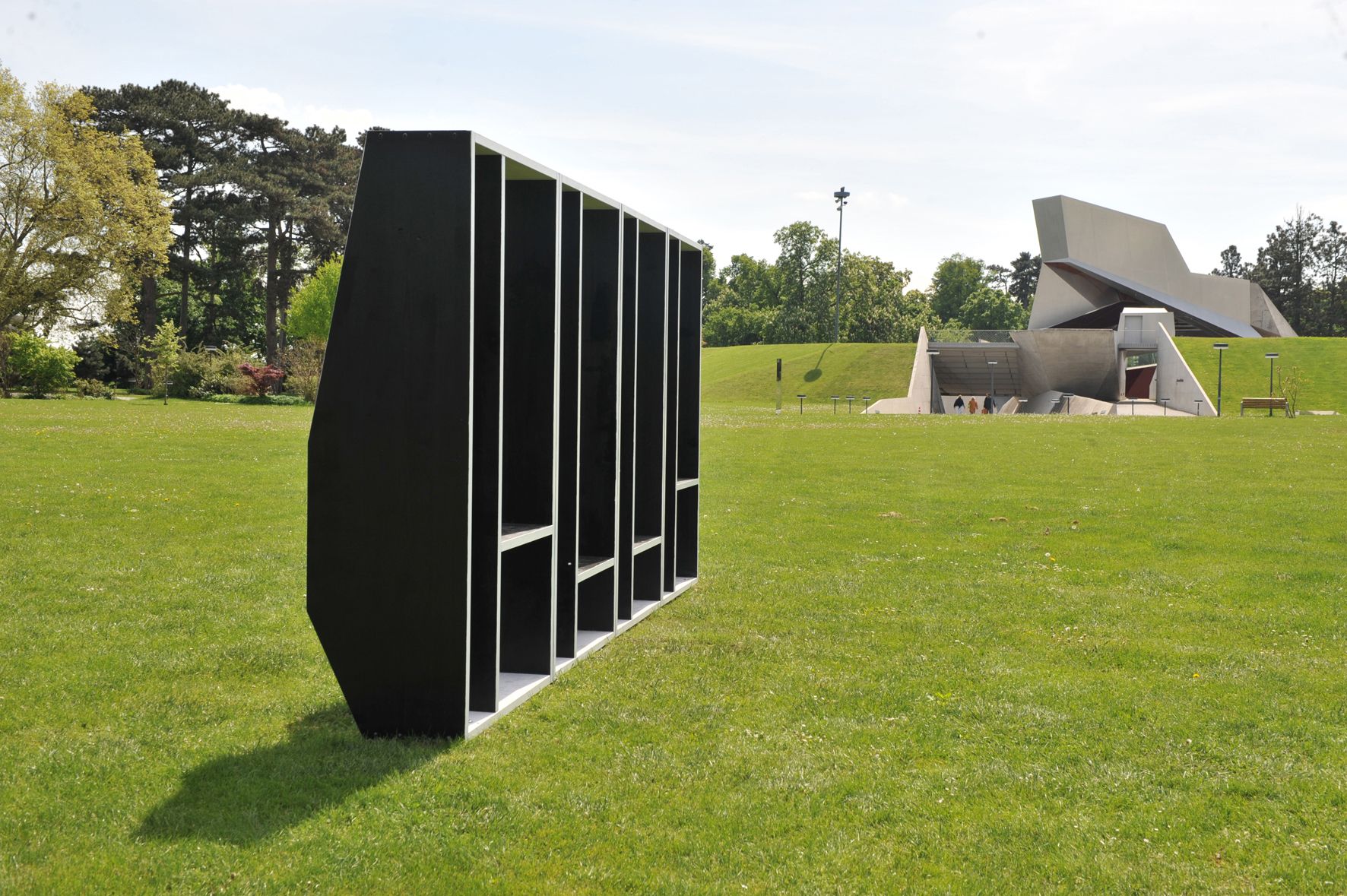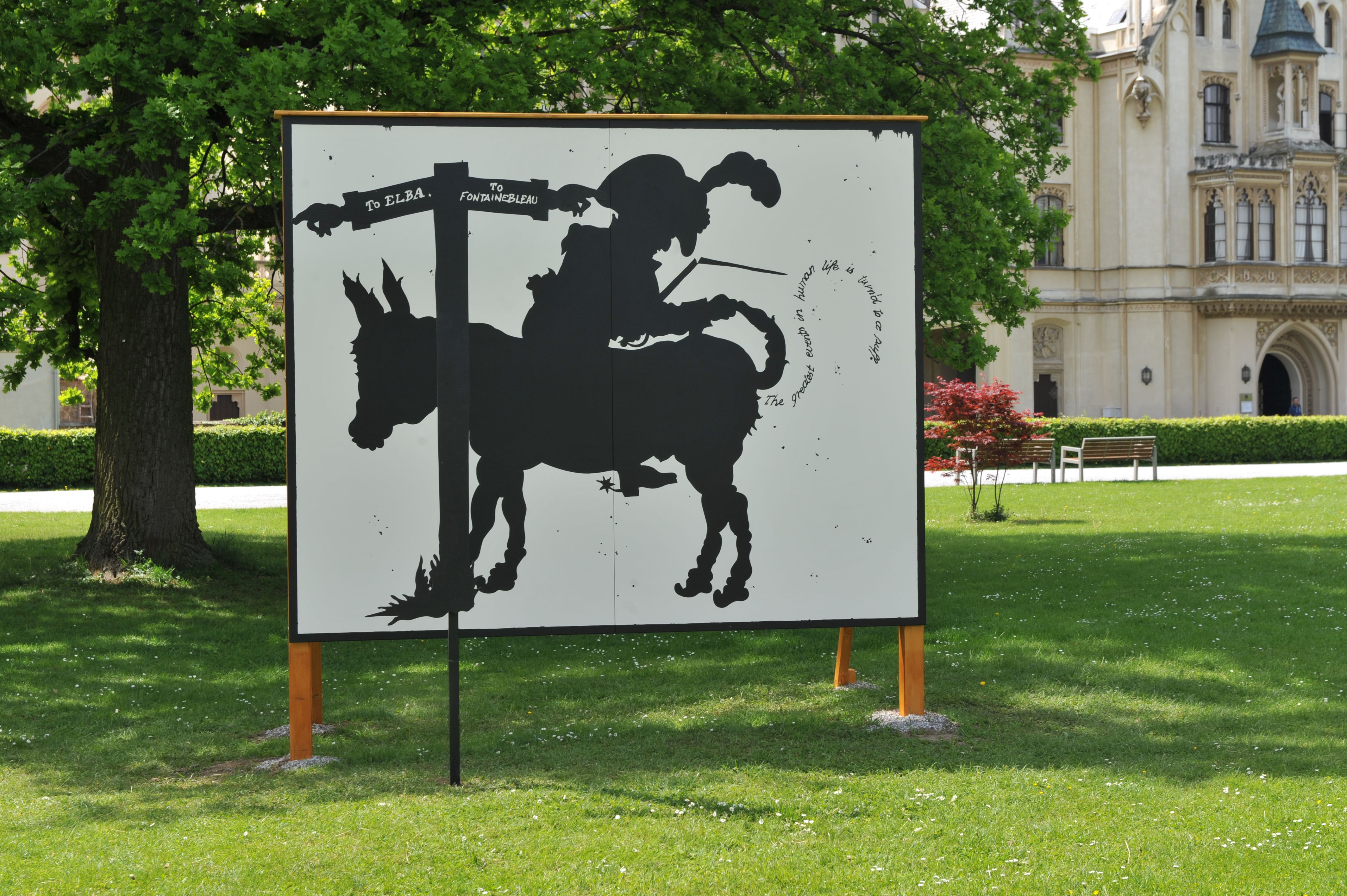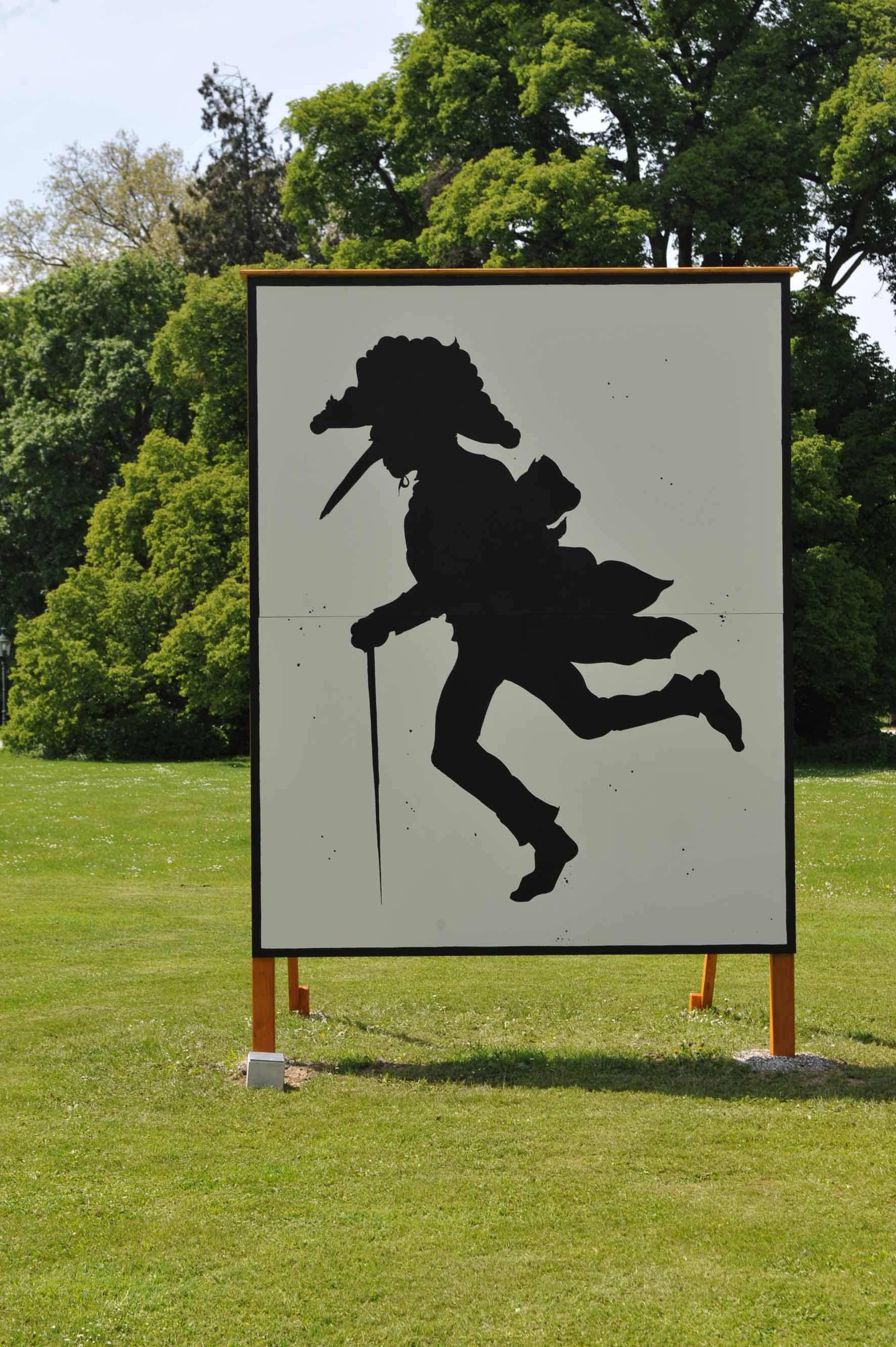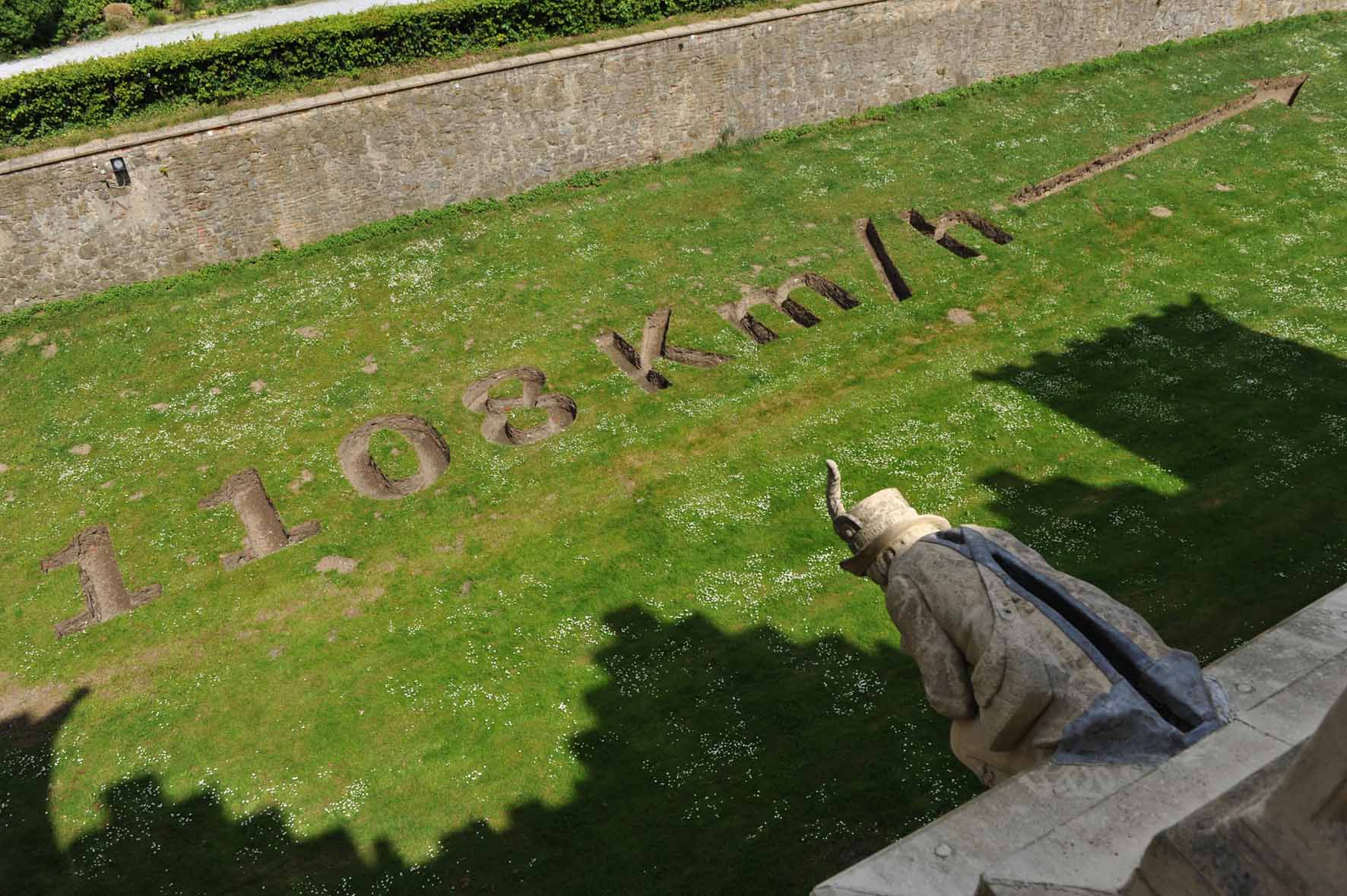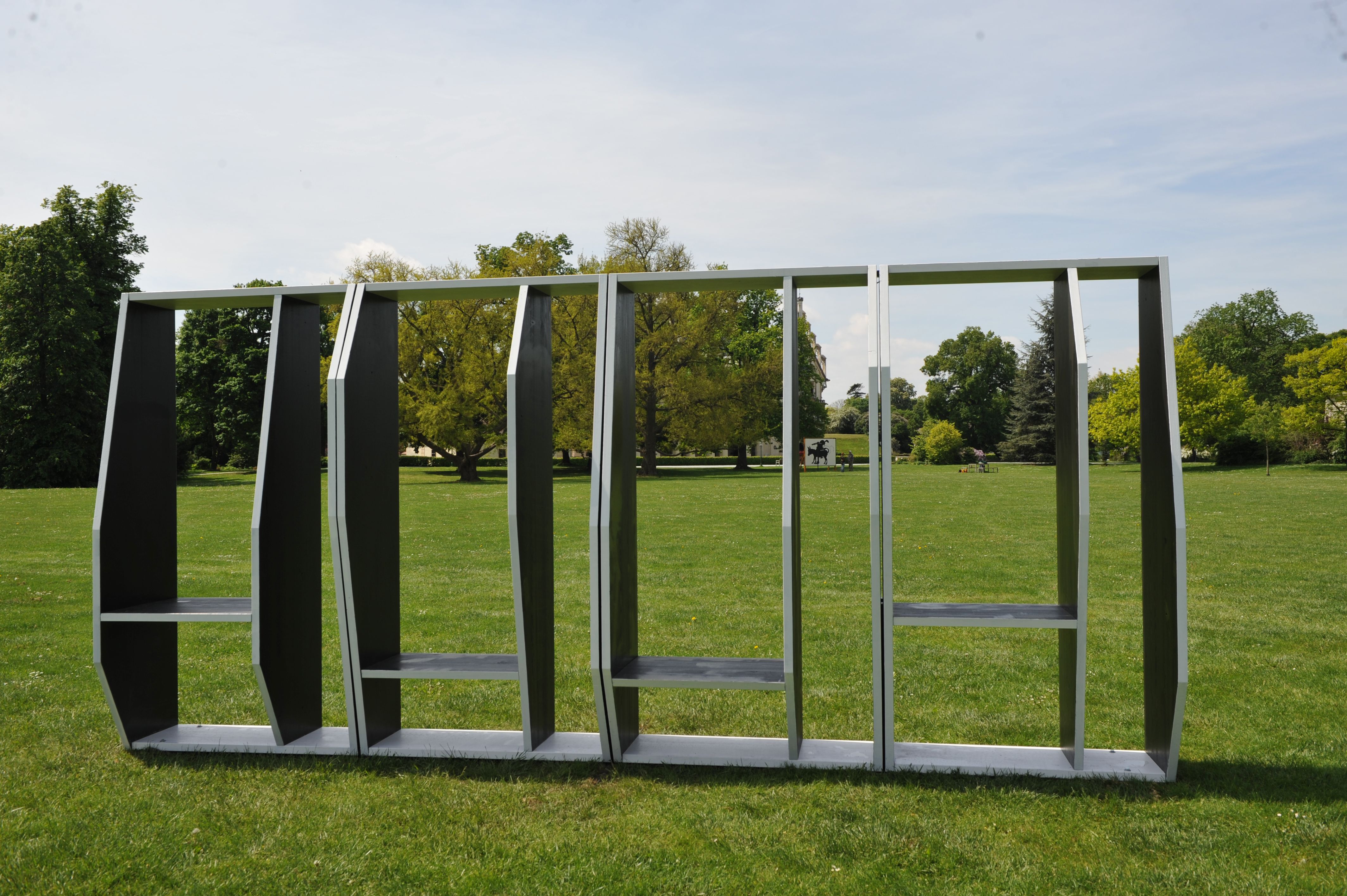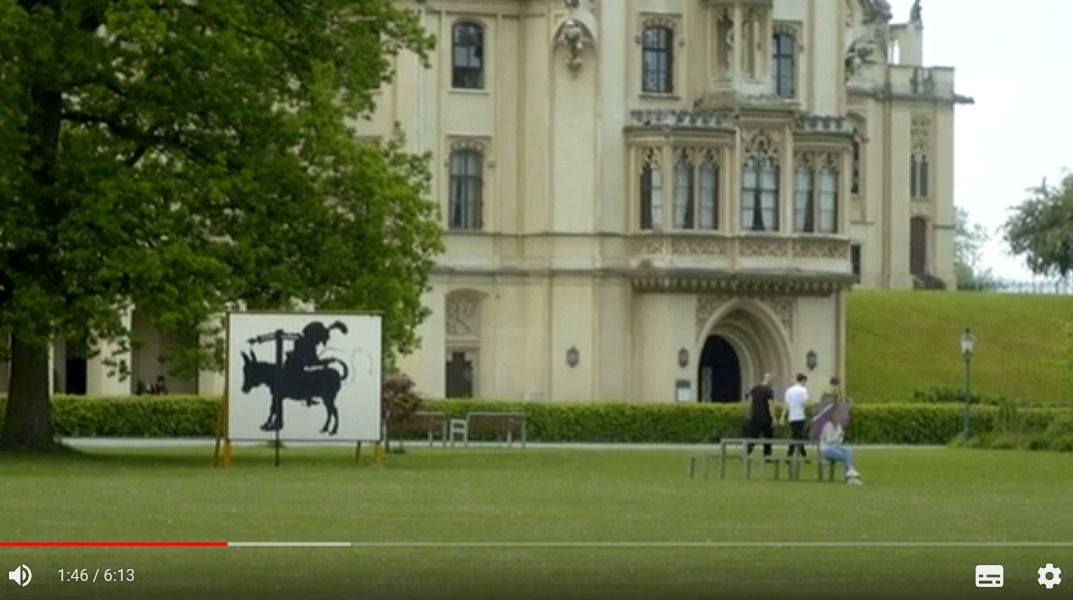Counterpoints I
BackArtists
- With
Information
Under the title "Counterpoints" several temporary installations were realized in the Schlosspark Grafenegg. The artists took up fragments of the site, its function or history, and expanded the historical field of reference of the 300-year-old English garden to include global discourses of the present.
Contributors
- Kuration
Contributions
Franz Kapfer
„Mein Drama findet nicht mehr statt, # akt 1–3“
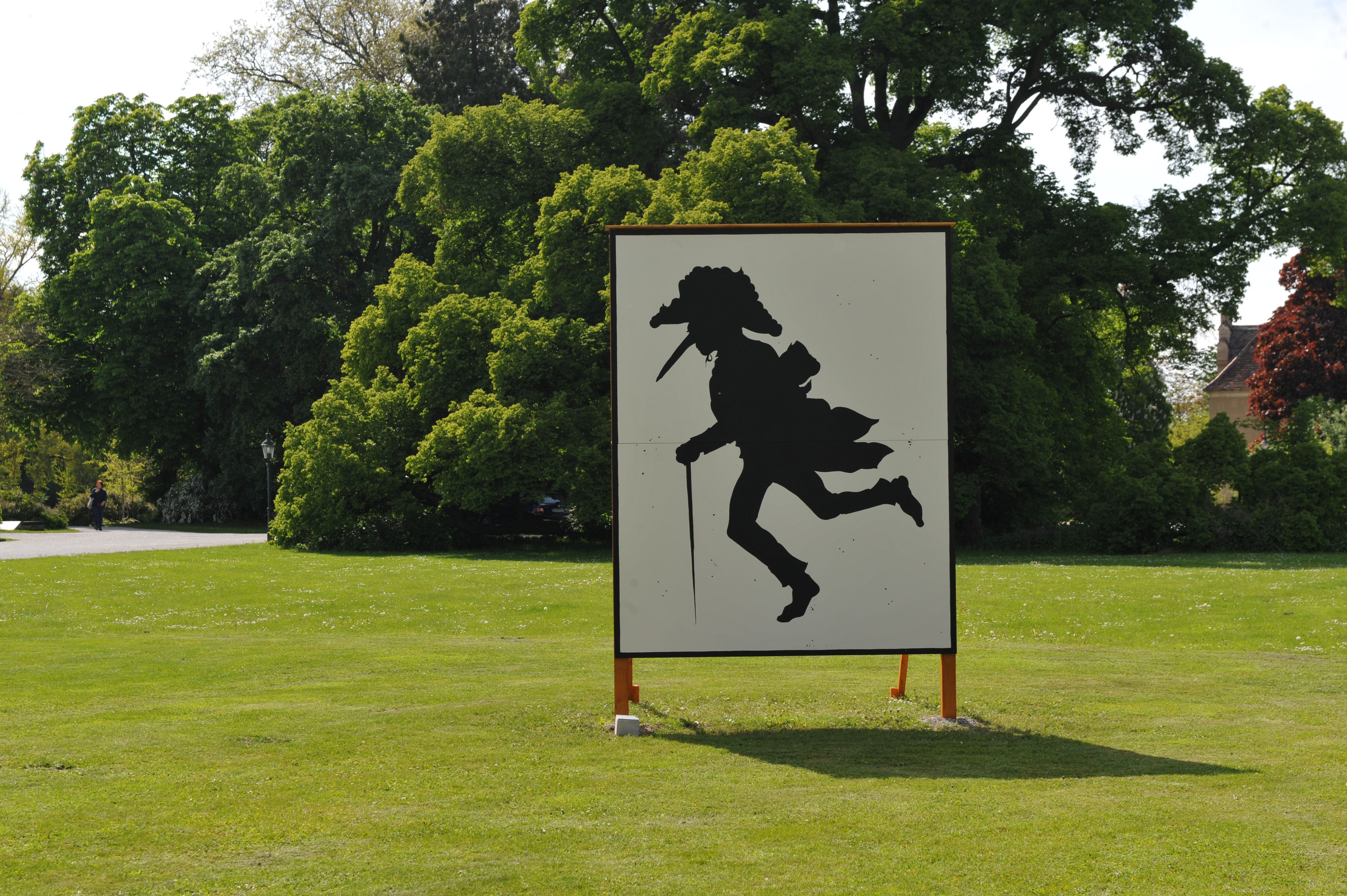
Franz Kapfer staged his ensemble of installations like a play in three acts – “a comedy,” he says, albeit one with bite. Similar to Georg Büchner’s play Leonce und Lena (1836), he combined elements of romantic comedy with political satire in three large picture panels placed at different locations in the park, like stage backdrops for three acts. The motifs are based on political caricatures from the 19th century – a time when the Grafenegg Castle was being remodeled into its present form in the style of Romantic historicism. The first act shows Napoleon being banished to the island of Elba in 1814. Napoleon is sitting on a donkey facing backward, gazing back toward Fontainebleau one last time. Meanwhile, the words of wisdom that even the greatest success in a human’s life will eventually become a puff of air is being passed out of the donkey’s behind. In Kapfer’s work, historical events merely set the stage for the “human drama.” Napoleon’s failure thus stands for our realization of the banality of our own existence and the “farce of repetition.” In the second panel toward the back in the park, the Austrian chancellor Metternich, who is shown fleeing, represents a system breaking under the weight of its own fear of change, among other things. In the third act, we meet Napoleon again. This time he is depicted as the greatest art thief in Europe, as he tries to make off with the Quadriga from the Brandenburg Gate in Berlin – for the sake of freeing her from the yoke of feudalism, of course. (Cornelia Offergeld)
Simon Faithfull
„Earth-Spin no.1: Grafenegg, 2017“
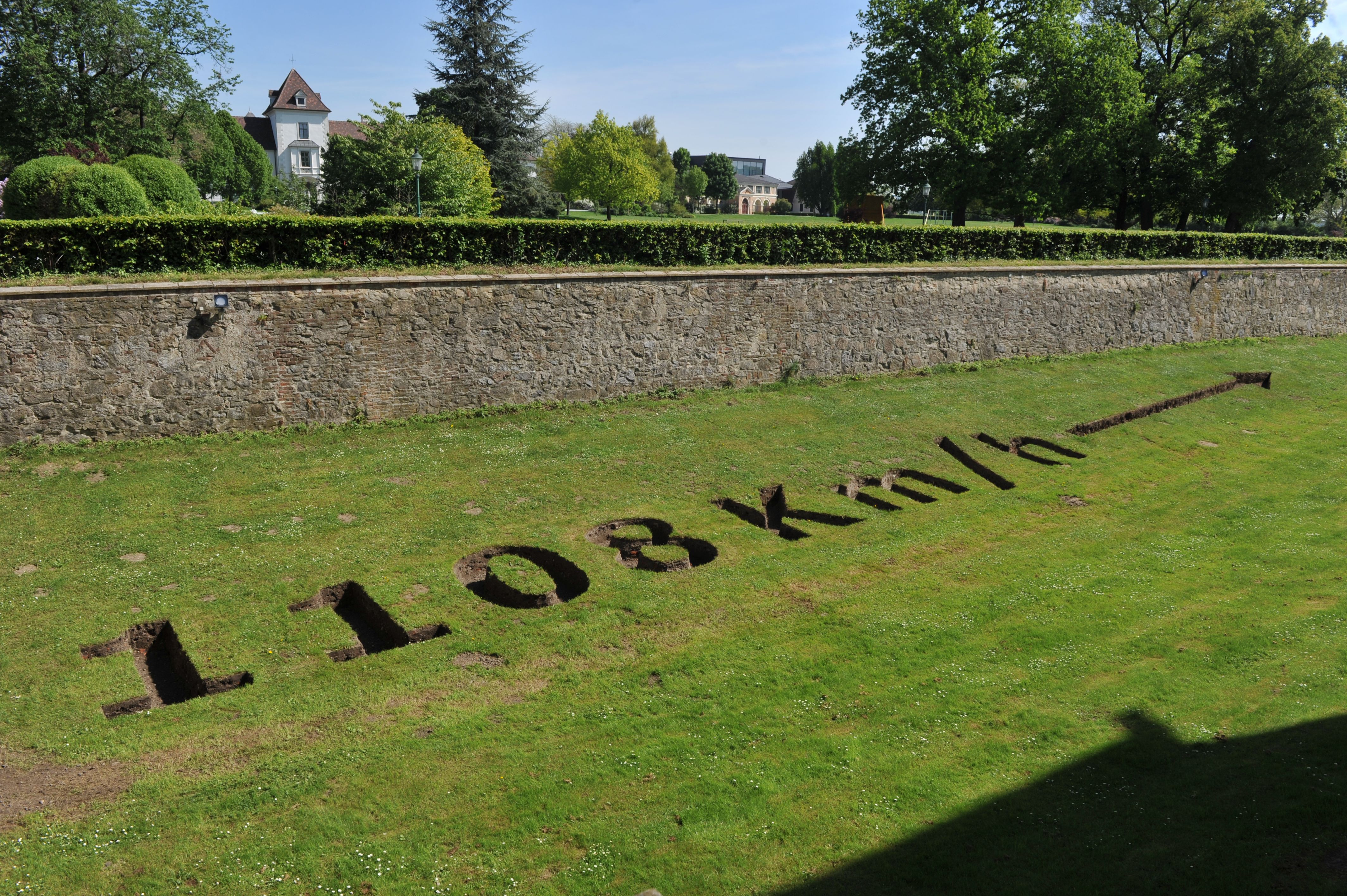
At the latitude of Grafenegg, the earth’s surface rotates at the speed of 1,108 kilometers per hour in space. Simon Faithfull did not just calculate this number; he also marked it out in a 50-meter stretch of ground in the castle moat, where he also installed an arrow that points east, the direction in which the earth rotates. Amidst the silence of the park, it is hard to imagine the incredible speed of the earth’s rotation. Everything appears to stand still here in the seeming naturalness of the English landscape garden. This contradiction also reveals a deeper meaning within this work, in that it exposes the human illusion of stability and permanence. Simon Faithfull understands the planet Earth as a sculptural object, and he is committed to exploring its limits in different media in collaboration with scientists and technicians. For another work called 0°00 Navigation, Faithfull walked, climbed, and swam through Great Britain, from the English Channel to the North Sea, without straying from the prime meridian, the reference point for all meridians. Faithfull also translates complex philosophical reflections about human delusions into simple forms. For example, in his temporary intervention Shy Dance-Floor, he installed a flashing disco floor with lights pulsing to an inaudible rhythm inside a pedestrian underpass. Whenever someone approached the dancefloor, which was lit from below, the lights would disappear, making them wonder if they had just seen a mirage.
(Cornelia Offergeld)
Elisabeth Penker
Composition With One Twisted Tone

Elisabeth Penker developed her sculpture Composition With One Twisted Tone as a counterpoint to the Wolkenturm, which is both an open air stage and an “acoustic sculpture” embedded within the park. Yet Penker’s project is also an attempt to create a utopian space based on analogies between perspectival and acoustic space. The sculpture consists of a row of wooden boards with twelve spaces in between. It repeats a single basic form by turning it 180 degrees, over and over again. The principle is reminiscent of the twelve-tone technique from musical composition, albeit here it is inverted: The artist takes the principle of the Schönberg School of composition of using twelve tones only once and creates a version in which only one form is appears twelve times, each subsequent form a mirror of its predecessor. The boards also resemble piano keys, with the black and white reversed. Seats have been installed in some of the in-between spaces, thus illustrating how Penker’s objects are located at the intersection between sculpture, furniture, and instrument. She also creates sound installations in which she explores the possible overlaps of serial structures and principles of order in language and music. For her work in Grafenegg, Elisabeth Penker therefore asked the musicians Alexander and Konstantin Wladigeroff to translate her sculpture into music. The musical score they composed for the sculpture was performed during the opening of the exhibition and can still be heard by scanning a QR code.
